SDKsupplies
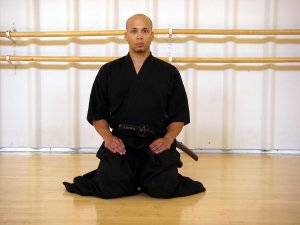
| Nuki Tsuke, pulling the blade out of the scabbard |
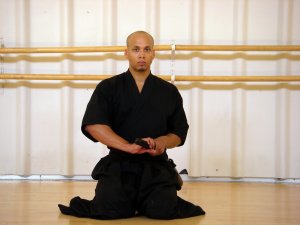 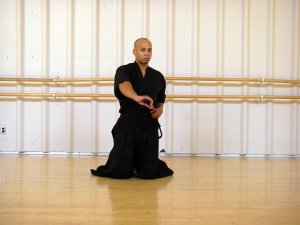 |
Nuki Tsuke, pushing the blade
out
|
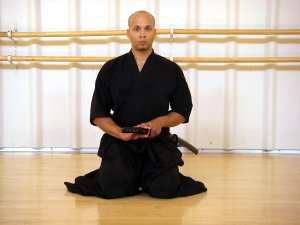 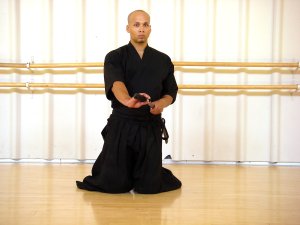 |
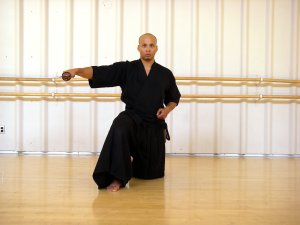 In the first
case, the pull, the final position of nuki tsuke shows how
the grip comes naturally onto the side of the tsuka (hilt) and this
results in a broken wrist, and an elbow that humps upward in a
chicken-wing effect. The shoulder is lifted, which you can also see in
the secont shot above as Nate Bain pulls the blade out. In fact, if you
look closely, that shoulder is starting to rise as he grips the hilt in
the first shot. In the first
case, the pull, the final position of nuki tsuke shows how
the grip comes naturally onto the side of the tsuka (hilt) and this
results in a broken wrist, and an elbow that humps upward in a
chicken-wing effect. The shoulder is lifted, which you can also see in
the secont shot above as Nate Bain pulls the blade out. In fact, if you
look closely, that shoulder is starting to rise as he grips the hilt in
the first shot. |
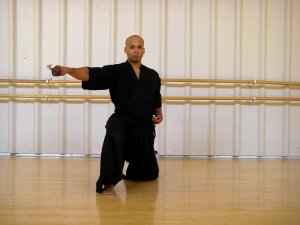 Here, when Nate has
pushed the blade out of the saya we see that the
hand naturally falls onto the tsuka in a position which allows the
wrist, arm and shoulder to remain down, providing a powerful anchor for
the horizontal cut. Here, when Nate has
pushed the blade out of the saya we see that the
hand naturally falls onto the tsuka in a position which allows the
wrist, arm and shoulder to remain down, providing a powerful anchor for
the horizontal cut. To try and get this final position, sensei may be saying to you, drop your shoulder, roll the hilt further over, adjust your right hand, tighten your right little finger, straighten your arm... and on and on. You might try thinking "push the sword out" rather than "pull it out". |
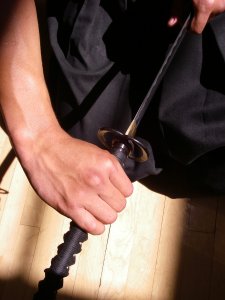 Here Nate has
gripped the hilt to pull the blade from the scabbard.
When we pull something we grip it, wrap all our fingers around it, and
pull
with the little finger edge of our hand. Here Nate has
gripped the hilt to pull the blade from the scabbard.
When we pull something we grip it, wrap all our fingers around it, and
pull
with the little finger edge of our hand. |
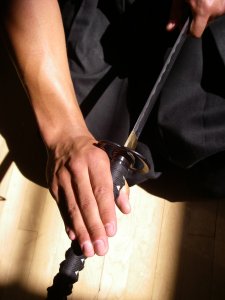 However, when we push something we don't close our
hands, but open them
up and use the palm or the fingertips. Since the palm can't work we use
the fingertips to push the blade out and from here, when the blade
rolls over, it will fall naturally into our proper grip. However, when we push something we don't close our
hands, but open them
up and use the palm or the fingertips. Since the palm can't work we use
the fingertips to push the blade out and from here, when the blade
rolls over, it will fall naturally into our proper grip.Notice that the tsuba is touching Nate's hand. This will also happen on the noto, when we "pull" the blade back into the scabbard and we'll talk about that below. |
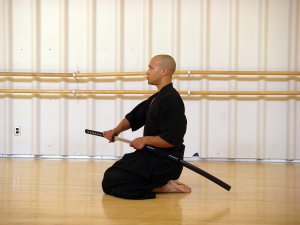
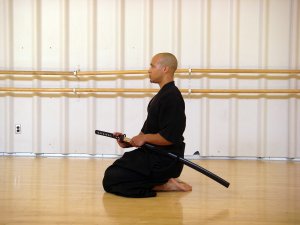
| Cutting with a push from the right hand |
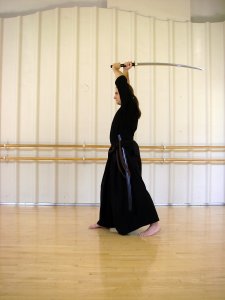 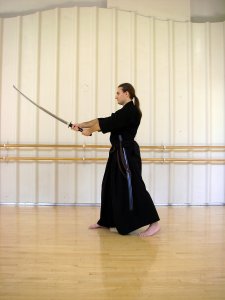 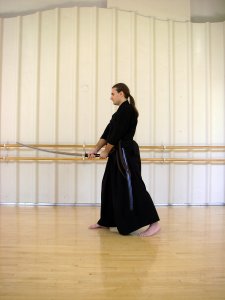 |
| Cutting with a pull from the left hand |
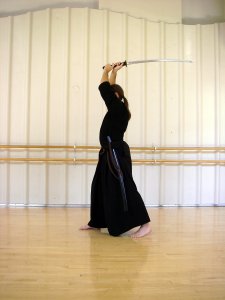 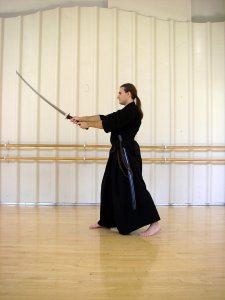 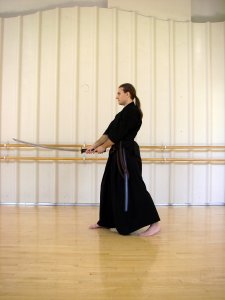 |
| Noto while thinking of
pushing the blade into the scabbard |
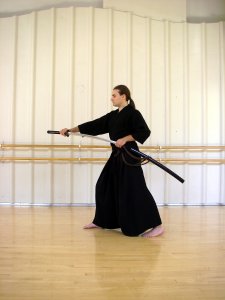 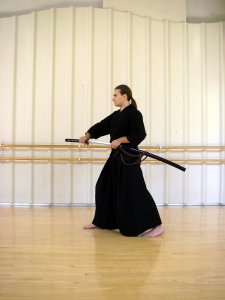 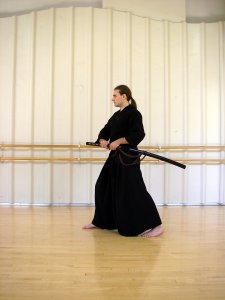 |
| Noto, pulling the blade
back into the scabbard. |
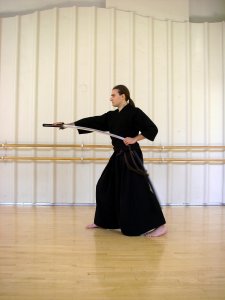 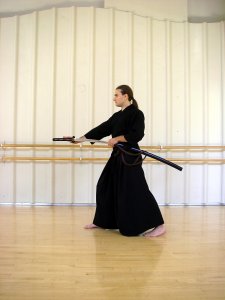 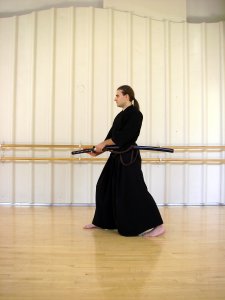 |
| Noto while thinking of pushing the blade into the scabbard |
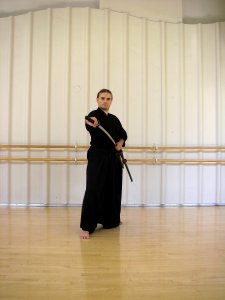 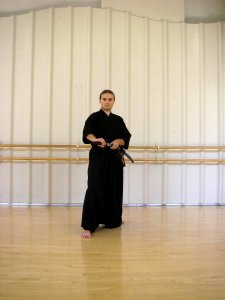 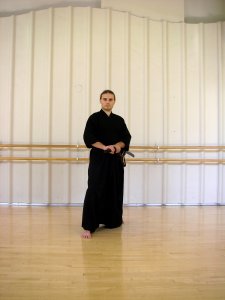 |
| Noto, pulling the blade back into the scabbard. |
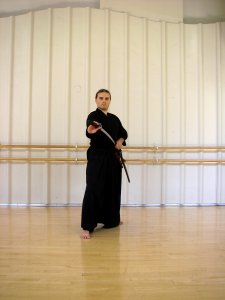 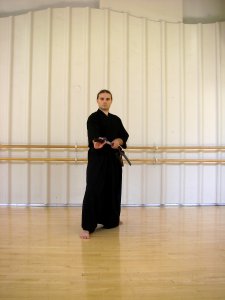 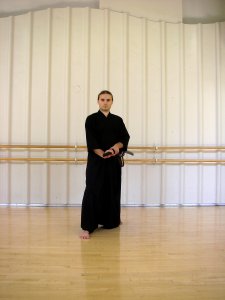 |
| Wrong |
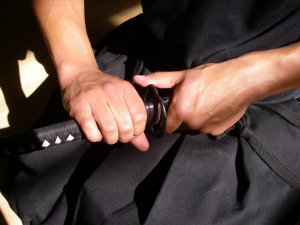 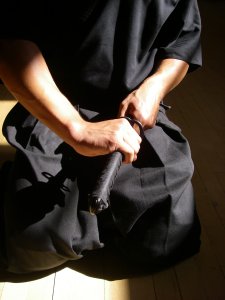 |
| Right |
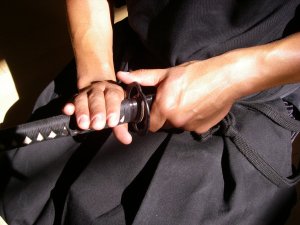 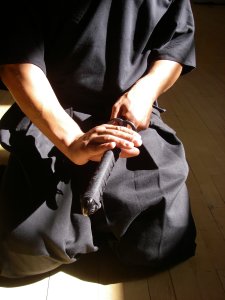 |